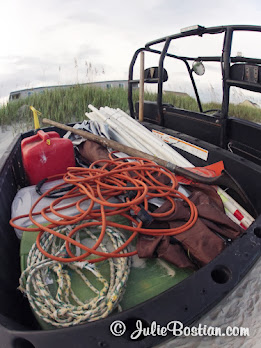What Can You Do to Help the Sea Turtles?
Volunteer with the Patrol....easy, we just need walkers to walk North Myrtle Beach, AT SUNRISE, on morning a week from May 1st through August 15th. Contact nmbturtles@hotmail.com for more information
If you are visiting North Myrtle Beach, we can still use your help.
- Report any Sea Turtle Activity to the North Myrtle Beach Sea Turtle Patrol-Call 843 213-9074 any time of the day or night to report nesting females on the beach, sea turtle tracks, stranded turtles or hatchlings.
- Turn off beachfront lights after 10pm from May 1 through Oct. 31. Use blinds or curtains to block indoor lights from reaching the beach
- Remove Obstacles from the beach after 7PM-Tents, chairs, coolers and sports equipment can entrap nesting females and emerging hatchlings
- Fill in all holes before you leave the beach-Holes can trap or slow down a nesting female. Holes also trap emerging hatchlings as they crawl to the ocean.
- Do Not Litter-Dispose of all trash properly. Sea Turtles eat plastics, especially plastic bottles, bags and balloons. They become entangled in ropes, strings and fishing lines.
Volunteer with the Patrol....easy, we just need walkers to walk North Myrtle Beach, AT SUNRISE, on morning a week from May 1st through August 15th. Contact nmbturtles@hotmail.com for more information
If you are visiting North Myrtle Beach, we can still use your help.
Look for Tracks
Dawn is the best time for finding sea turtle tracks. The nesting female turtle leaves the distinctive “tractor” marks as they pull themselves across the sand.
The tracks are usually found starting at the last high tide line, up the beach to the dune lines.
If you see tracks, do not walk on the crawl or on a suspected nest site. Call the North Myrtle Beach Sea Turtle Patrol at 843-213-9074, making sure to note which beach, address if known or any landmarks near crawl (Piers, condo complex). The NMB Sea Turtle Patrol will come ASAP to assess the crawl and determine if eggs were laid.
If you should discover a nesting female:
Coming out of the water is unnatural for the Sea turtles. The females are very skittish and easily scared away from a nesting site. If this happens, she may attempt to nest further down the beach or wait to return the next night. If she is unsuccessful, she may drop her eggs in the ocean or choose a poor nesting site.
To observe a nesting female without scaring her away:
- Do not crowd the turtle as she is coming out of the ocean and crawling up the beach.
- Squat down and stay still. Movement may make her return to the ocean.
- Dark beaches and little activity after dark will encourage a turtle to come ashore to nest.
- Do Not shine flash lights or take flash photography while watching a nesting turtle.
- Call the NMB Sea Turtle Patrol at 843 213-9074.
Sea Turtle Hatchlings
Hatchlings usually dig out of the nest at night and head toward the natural lights of the moon and ocean. To help the hatchlings reach the ocean safely:
- Minimize beach front lighting during the nesting season, May 1-Oct 31.
- If you see a nest emerging-Observe quietly, do not pick up the hatchlings and put into the ocean. They must crawl across the sand by themselves.
- Call the NMB Sea Turtle Patrol at 843 213-9074.
- If a hatchling is on the beach during the day, they can dehydrate quickly from the heat of the sun and die. If one is found, place it just at the edge of the surf to allow it to rehydrate. Do not put into the water. When it is ready, it will make it's own way into the surf.
REPORT NEST ABUSE
Dogs, cats, foxes, raccoons and humans will dig into a nest. If you notice that a nest has been disturbed in any way, please report it to 843-213-9074.
Loggerhead turtles are a threatened species on the Endangered List and are protected by state and federal laws. Nests that have been protected by the NMB Sea Turtle Patrol will be clearly marked by a bright orange sign and bright plastic tape wound around poles. The NMB Sea Turtle Patrol monitors all nests closely during the hatchlings’ 45/60-day incubation period.
CELEBRATE THE SPECIES
Sea turtles are ancient reptiles from the days of the dinosaurs. They are symbols of perseverance, longevity and eternity. Adult loggerheads are about 3 feet long and can weigh over 300 pounds. Females return after more than 20 years to nest on the beach where they were born, but males rarely come ashore.
During the May-October nesting season, females may nest 2-5 times and lay approximately 100 ping-pong ball sized eggs in each nest. The eggs incubate for 45 to 60 days and the hatchlings emerge from the sand about 3 days after hatching. Loggerhead hatchlings are dark brown, about 2 inches long, and weigh only ounces.
It’s estimated that 1 out of 1,000 hatchlings lives to reproduce. Predators include ghost crabs,foxes, raccoons, sea birds and fish. Human activities such as egg and meat consumption, long-line fishing, TED-less trawling, careless boating and beachfront development has taken an enormous toll on the sea turtle populations.
Celebrate the species … participate in its survival.
























